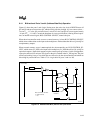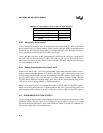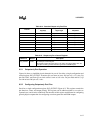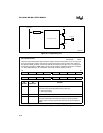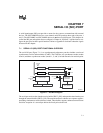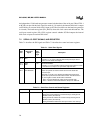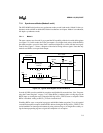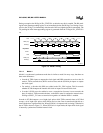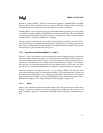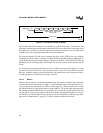
7-1
CHAPTER 7
SERIAL I/O (SIO) PORT
A serial input/output (SIO) port provides a means for the system to communicate with external
devices. The 8XC196MH device has a two-channel serial I/O port that shares pins with ports 1
and 2. (The 8XC196MC and 8XC196MD devices do not have serial I/O ports.) This chapter de-
scribes the SIO port and explains how to configure it. Chapter 6, “I/O Ports,” explains how to con-
figure the port pins for their special functions. Refer to Appendix B for details about the signals
discussed in this chapter.
7.1 SERIAL I/O (SIO) PORT FUNCTIONAL OVERVIEW
The serial I/O port (Figure 7-1) is an asynchronous/synchronous port that includes a universal
asynchronous receiver and transmitter (UART). The UART has two synchronous modes (modes
0 and 4) and three asynchronous modes (modes 1, 2, and 3) for both transmission and reception.
Figure 7-1. SIO Block Diagram
The serial port receives data into the receive buffer (SBUFx_RX) and transmits data from the port
through the transmit buffer (SBUFx_RX). The transmit and receive buffers are separate registers,
permitting simultaneous reads and writes to both. These buffers support continuous transmissions
and allow reception of a second byte before the first byte has been read.
SP
x
_CONSP
x
_STATUS
SBUF
x
_TX
SBUF
x
_RX Receive Shift Register
Transmit Shift Register
RXD
x
TXD
x
Control Logic
Baud Rate
Generator
TI
RI
Interrupts
XTAL1
BCLK
x
MSB
1
0
Internal
Data
Bus
SP
x
_BAUD
A2774-01



